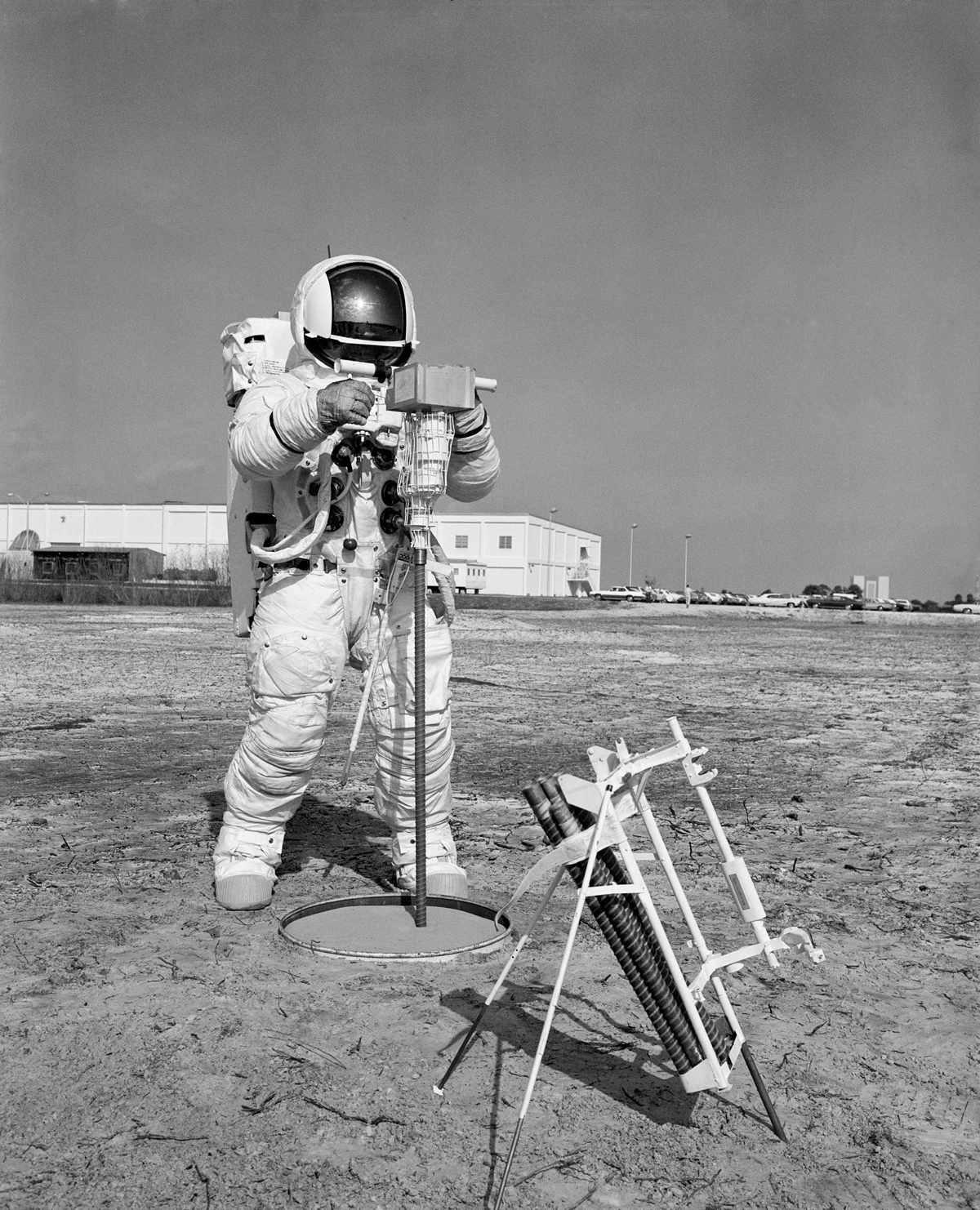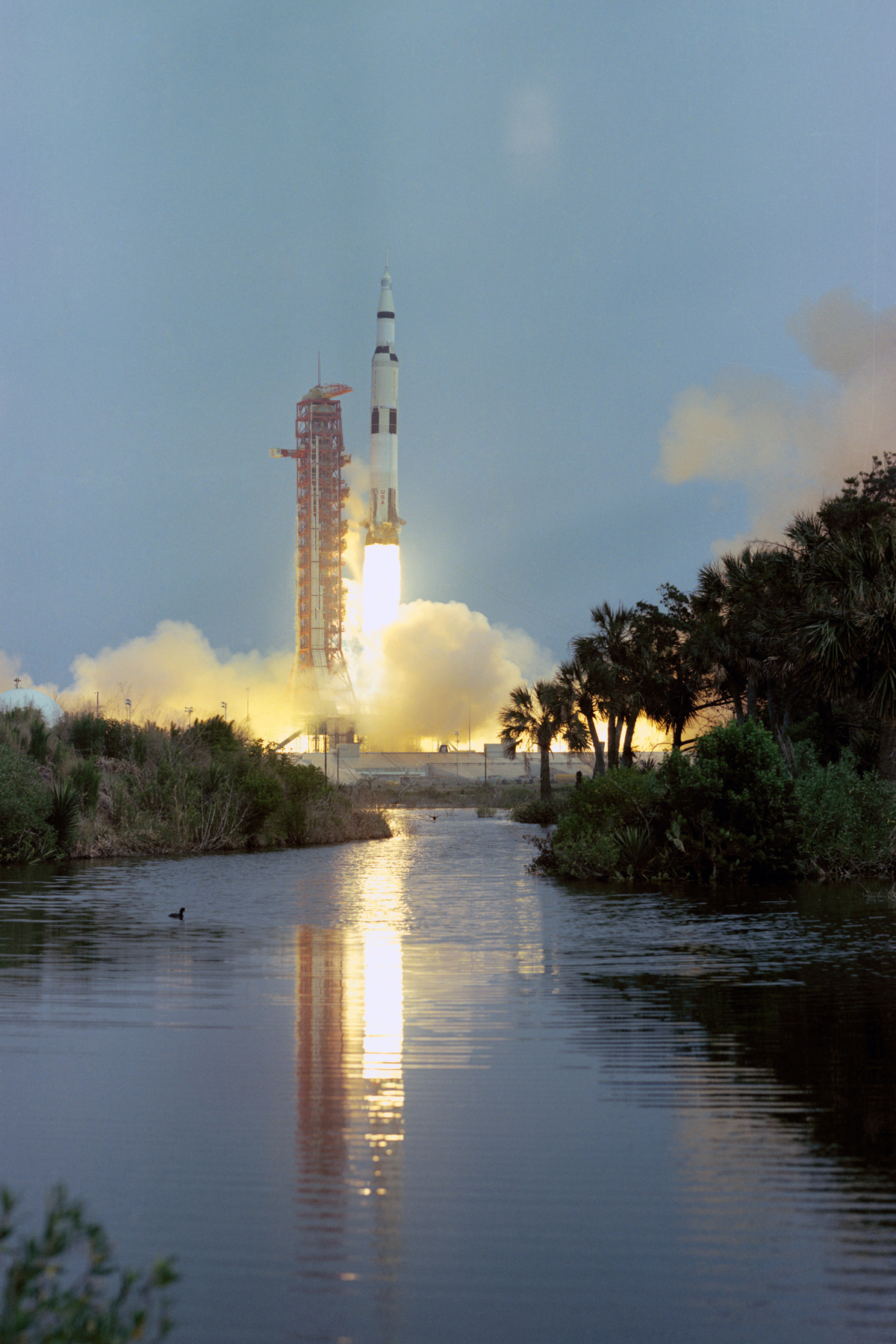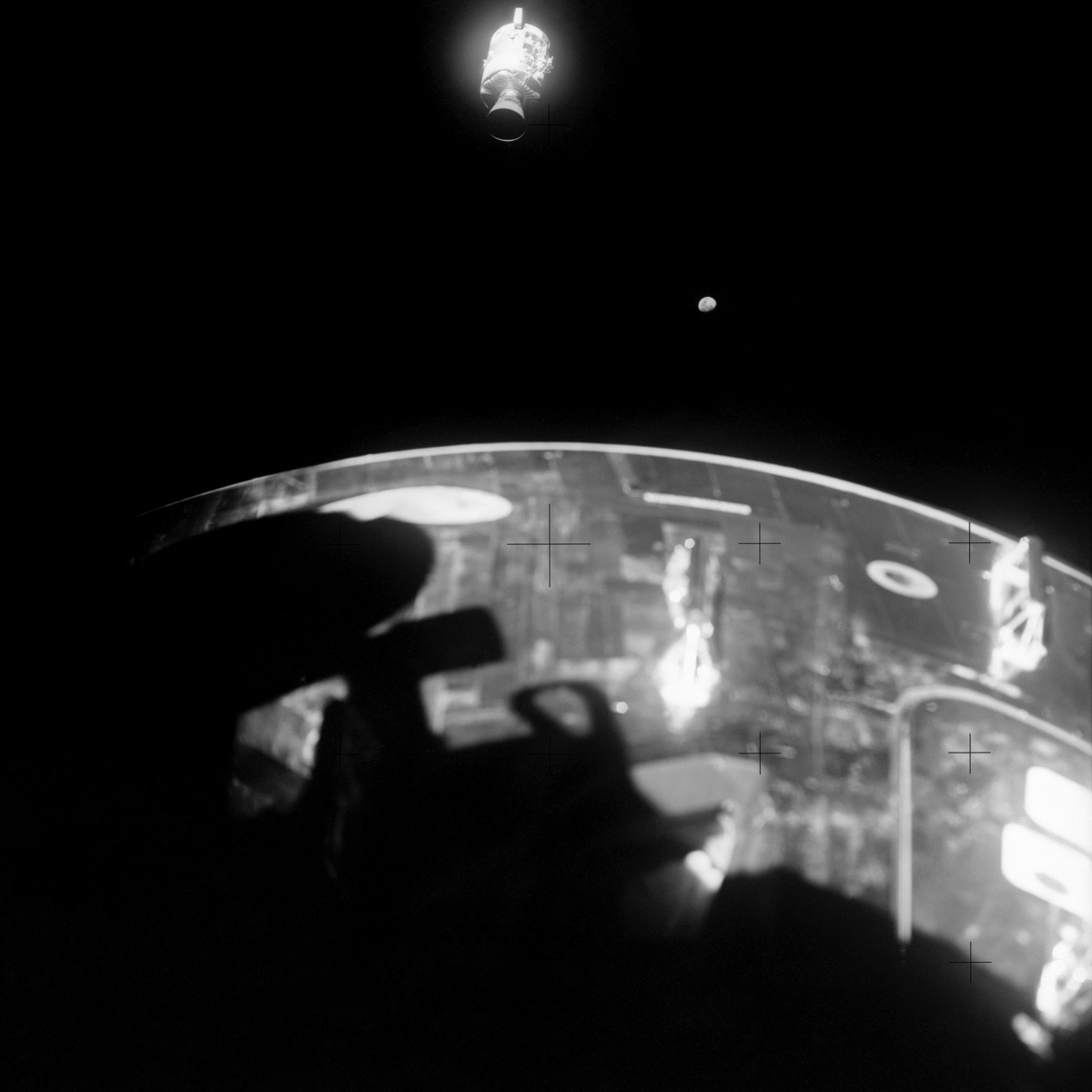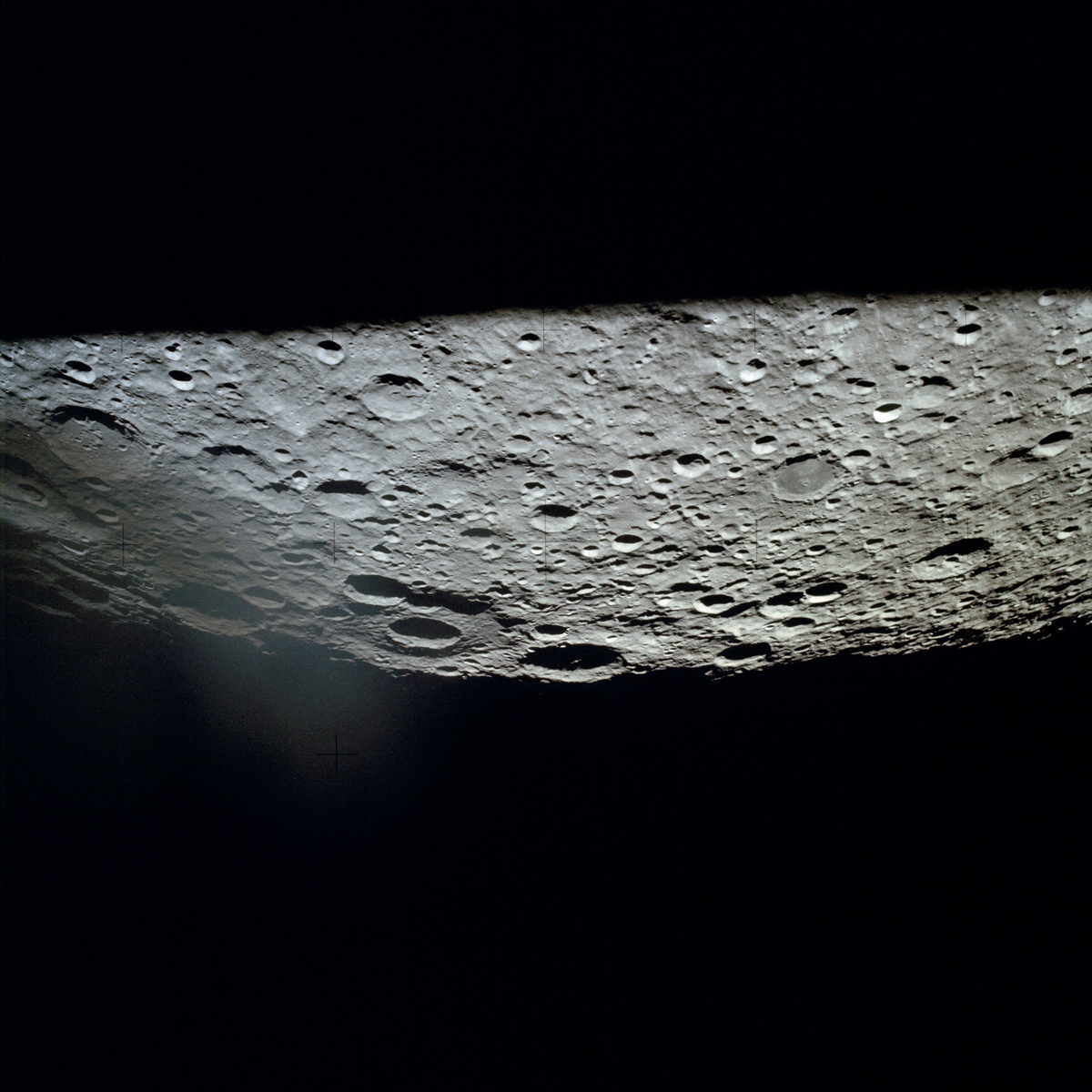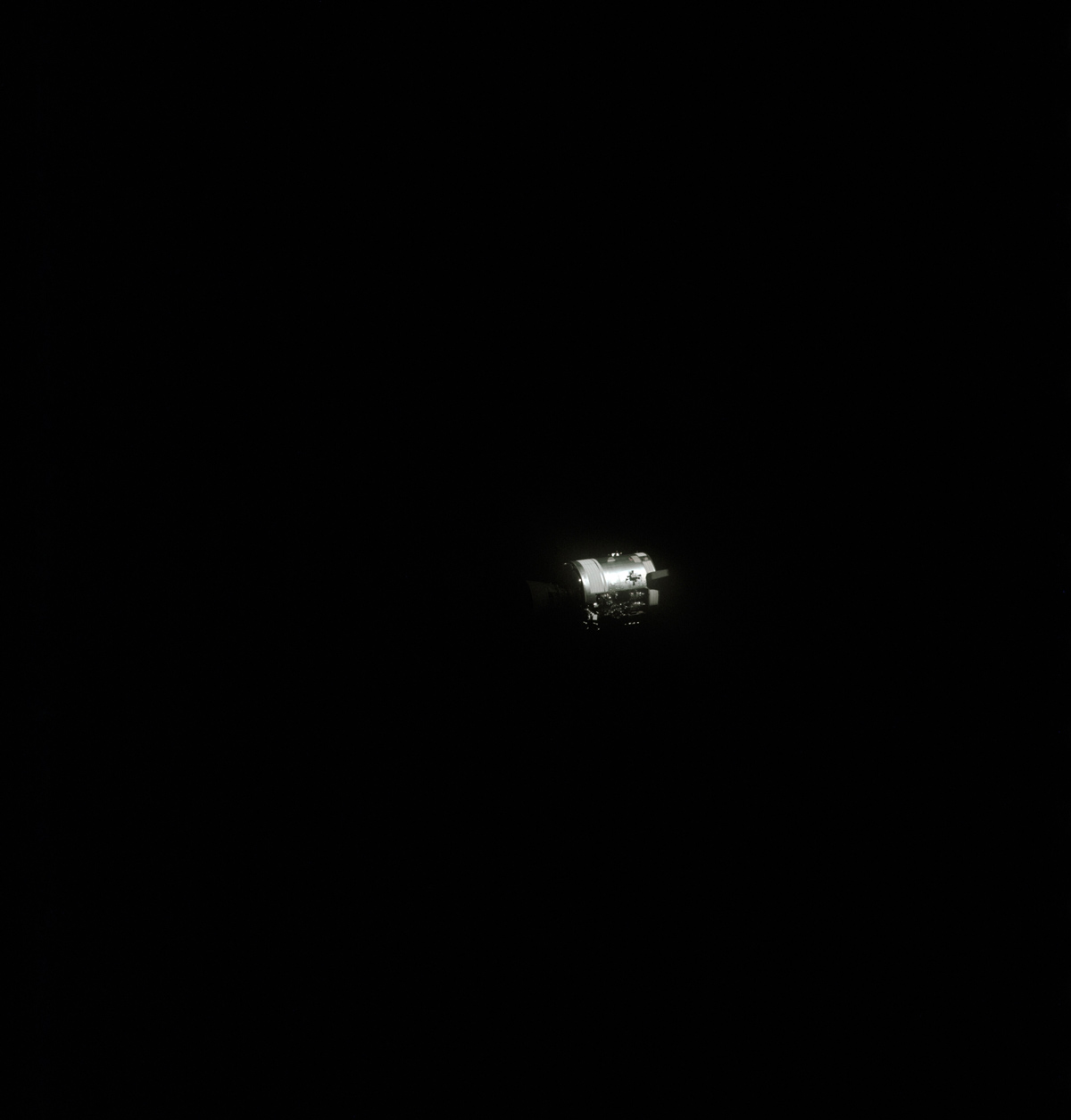Failure was not an option: NASA's Apollo 13 mission of survival in pictures
Lunar exploration plans
In January of 1970, teams laid out where the Apollo 13 lunar landing mission would occur, seen here in relation to the two previous NASA lunar landings (Apollo 11 and Apollo 12). Apollo 13 was proposed to land in the highlands north of Fra Mauro. The Apollo 12 mission, which arrived at the lunar surface on Nov. 19, 1969, landed around 105 nautical miles (200 kilometers) west of the proposed Apollo 13 landing site. NASA's unpiloted Ranger 7 spacecraft, which landed on the moon on July 31, 1964, set down about 130 nautical miles (240 km) from the targeted Apollo 13 landing site, and 140 nautical miles (260 km) south-southeast of the Apollo 12 site.
Testing the tools
During an extravehicular activity walkthrough on Jan. 28, 1970, astronaut Fred Haise, Apollo 13 lunar module pilot, uses an Apollo Lunar Surface Drill to make a 10-foot (3 meters) hole for a heat flow probe. On the lunar surface, an electronic instrument will measure the outward flux of heat from the hole.
Liftoff!
On April 11, 1970, a Saturn V rocket carrying the Apollo 13 spacecraft rose from Launch Complex 39A at NASA's Kennedy Space Center in Cape Canaveral, Florida, with astronauts Jim Lovell, Jack Swigert and Fred Haise. Liftoff occurred at 3:13 p.m. local time (1913 GMT).
Mapping the trip
Using a photographic illustration of the Far Mauro area of the moon, the scheduled traverses for Apollo 13's extravehicular activities (EVAs) are laid out. The lunar module was supposed to land at the center-most red dot, and the first moonwalk would have followed the red path, with the second moonwalk on the black path. The yellow lines indicate possible extensions to the EVAs if chosen. Red dots along each path signify points of interest for samples and observation.
Mission Control
On April 13, 1970, Eugene F. Kranz, one of four Apollo 13 flight directors, communicates with Apollo 13 lunar module pilot Fred Haise in the fourth television transmission from the Apollo 13 mission. Kranz sits with his back to the camera in the Missions Operations Control Room at the Manned Spacecraft Center.
Better together
During the problematic Apollo 13 mission, six NASA astronauts and two flight controllers monitor console activity in the Mission Operations Control Room of the Mission Control Center (now known as the Johnson Space Center) in Houston. The Apollo 13 moon landing was canceled due to an explosion in the service module, and at the time of this image, the Apollo 13 crewmen were trying to make it back to Earth in the damaged spacecraft.
Sitting at the console, from left to right: control room guidance officer Raymond Teague, Apollo 14 lunar module pilot Edgar Mitchell and Apollo 14 Cmdr. Alan Shepard. Standing behind them are, from left to right, NASA astronaut Anthony W. England, Apollo 14 backup crewmembers Joe Engle, Gene Cernan and Ron Evans, along with M.P. "Pete" Frank, a flight controller.
Breaking space news, the latest updates on rocket launches, skywatching events and more!
A damaged craft
On April 17, 1970, this view of the severely damaged Apollo 13 service module was photographed from the lunar module/command module following the jettisoning of the service module. An explosion of an oxygen tank blew off an entire panel. The damage and resulting release of the service module caused the Apollo 13 crewmen to use the lunar module as a "lifeboat" of sorts, jettisoning it only before re-entering Earth's atmosphere in the command module.
Blue Marble, 1970
During their journey back to Earth, the Apollo 13 crew captured this stunning view of Earth on April 17, 1970. The southwestern United States and northwest Mexico are the most visible land mass, and the peninsula of Baja California is clear. There is a significant amount of cloud cover over the Northern Hemisphere of the planet.
The far side of the moon
Although the lunar landing was canceled, the Apollo 13 spacecraft did circle around the moon as the crew struggled to make it back to Earth, and the astronauts were able to capture closeup images of the lunar surface. In this photo, the large International Astronomical Union Crater No. 221 sits at the center on the horizon with another large crater to the south known as IAU No. 220. The image shows part of the lunar surface southeast of Mare Moscoviense.
Related: Stunning 4K video re-creates Apollo 13's perilous trip around moon
Ruined module
From the lunar and command module, Apollo 13 astronauts captured this image of the damaged service module that was discarded in space. An apparent explosion of an oxygen tank in Sector 4 of the service module severely damaged it, forcing the Apollo 13 crew to use the lunar module as a "lifeboat" to get back to Earth.
Creative survival
After an explosion damaged the service module, the Apollo 13 astronauts had to use the lunar module as a "lifeboat" to get home. Systems in the lunar module had to be rigged to make it possible to get the men back to Earth. Hoses were connected to various apparatus to make the trip home possible. The astronauts pictured here are holding the feed water bag from the portable life support system, which is connected to a hose from the Lunar Topographic Camera. Behind the astronauts the "mail box" can be seen — a creation built by the crewmen using the command module's lithium-hydroxide canisters that clean carbon dioxide from the air inside the spacecraft.
OFFER: Save 45% on 'All About Space' 'How it Works' and 'All About History'!
For a limited time, you can take out a digital subscription to any of our best-selling science magazines for just $2.38 per month, or 45% off the standard price for the first three months.

Christine Lunsford joined the Space.com team in 2010 as a freelance producer and later became a contributing writer, covering astrophotography images, astronomy photos and amazing space galleries and more. During her more than 10 years with Space.com, oversaw the site's monthly skywatching updates and produced overnight features and stories on the latest space discoveries. She enjoys learning about subjects of all kinds.

